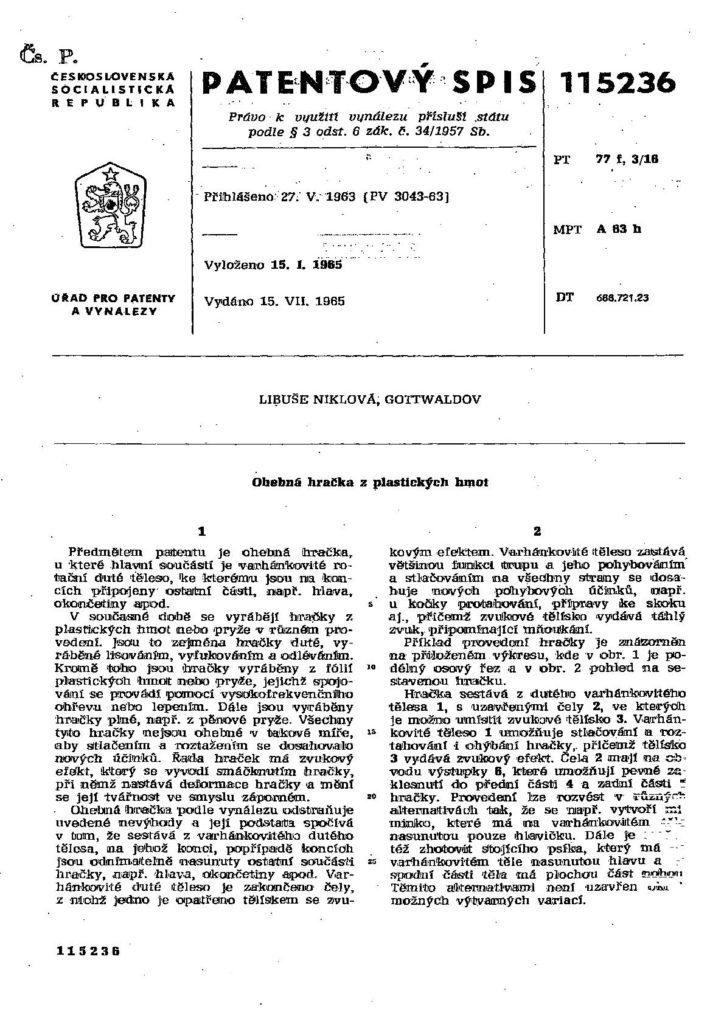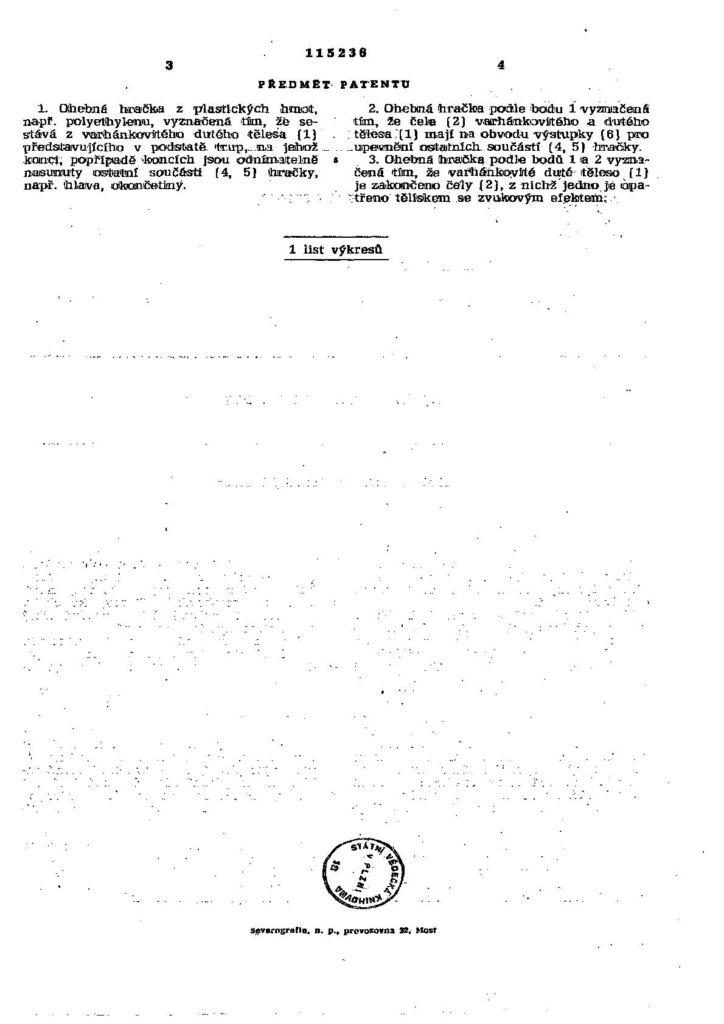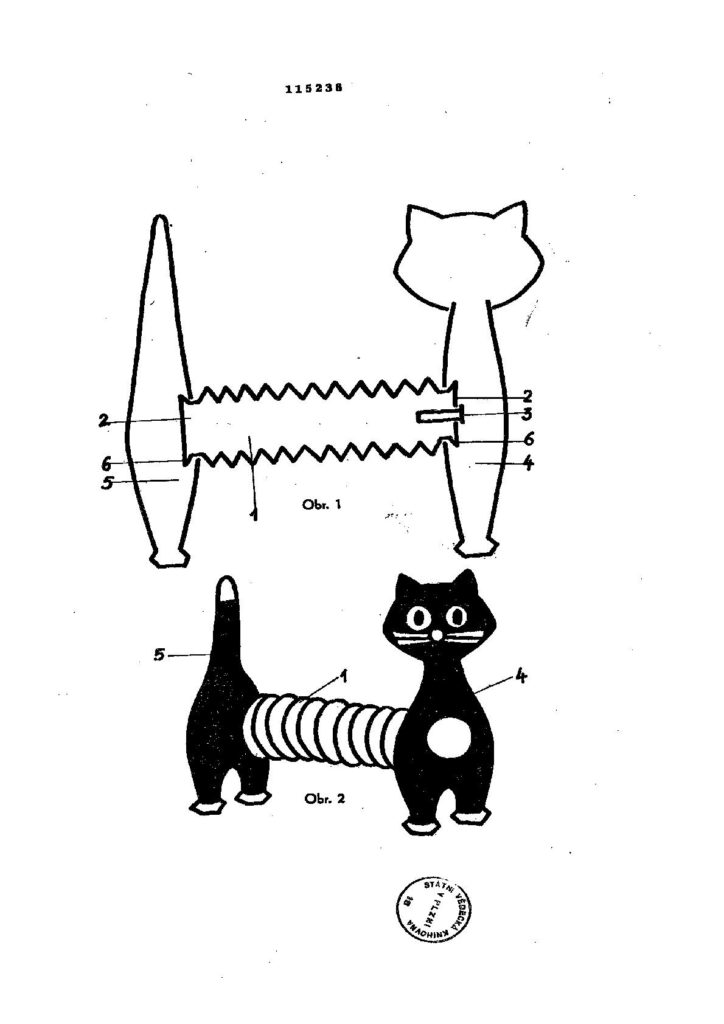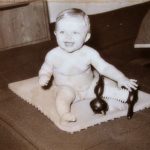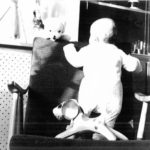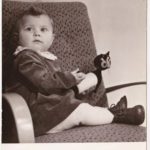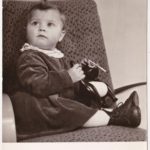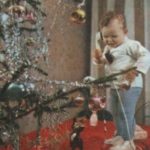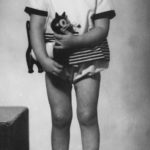LÍBA THE TOMCAT
He saw the light of day in 1963 in Napajedla, in the national company Fatra, where Libuše Niklová noticed the bellows tubes from the flushing tank that were produced there, the so-called goose necks, and got an absolutely brilliant and revolutionary idea to create the bodies of animals from these tubes and thus create the world’s first flexible plastic toy. Accordion tomcat.
This idea, which Libuše Niklová had patented, influenced the production of plastic toys all over the world. The patent was issued in 1965 and the first series-produced tomcats rolled off the production line in Fatra Napajedla in 1966. That year a respectable 270,000 were produced. Their production continued until 1970 and more than 1,200,000 were produced. Today it is already a cult toy that was also copied by countries around the world. But it has its unshakable place even in the most prestigious museums of modern art in the world.
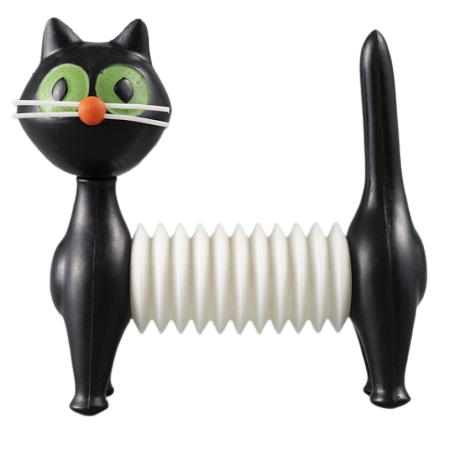
How it all began...
It was 1963 when Libuše Niklová was walking past a cart full of bellows tubes from flushing tanks in Fatra Napajedla. They captivated her with their flexibility, and that’s how she got an idea that influenced not only the production of toys all over the world, but mainly influenced the lives of tens of millions of children who then played with her accordion toys and still play today in many countries. It didn’t take long before Libuše Niklová created the design of the tomcat under the title DR 2371 and the first prototype. As the first animal, she designed the now world-famous Tomcat and one of the most copied toys in the world. Her first sketch shows that she originally intended an accordion with nine chambers, but eventually decided on eleven chambers. In the same year, Libuše Niklová applied for a patent for a flexible plastic toy, the first such toy in the world. The approval of the patent took more than two years, but in the middle of 1965 the patent was finally granted and nothing prevented the start of its production. After a few more months of production preparations, serial production began in 1966.
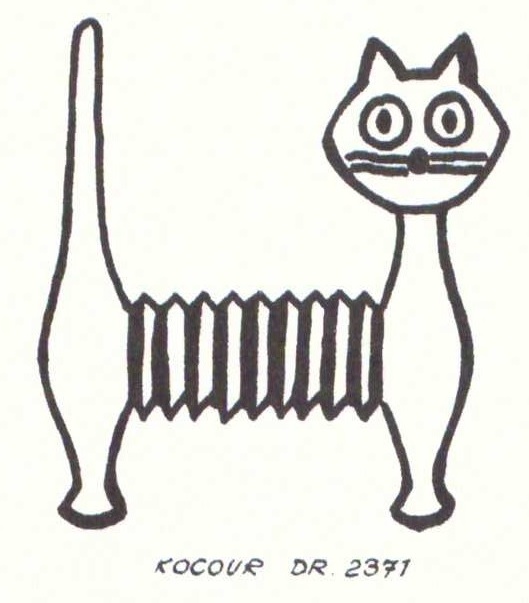
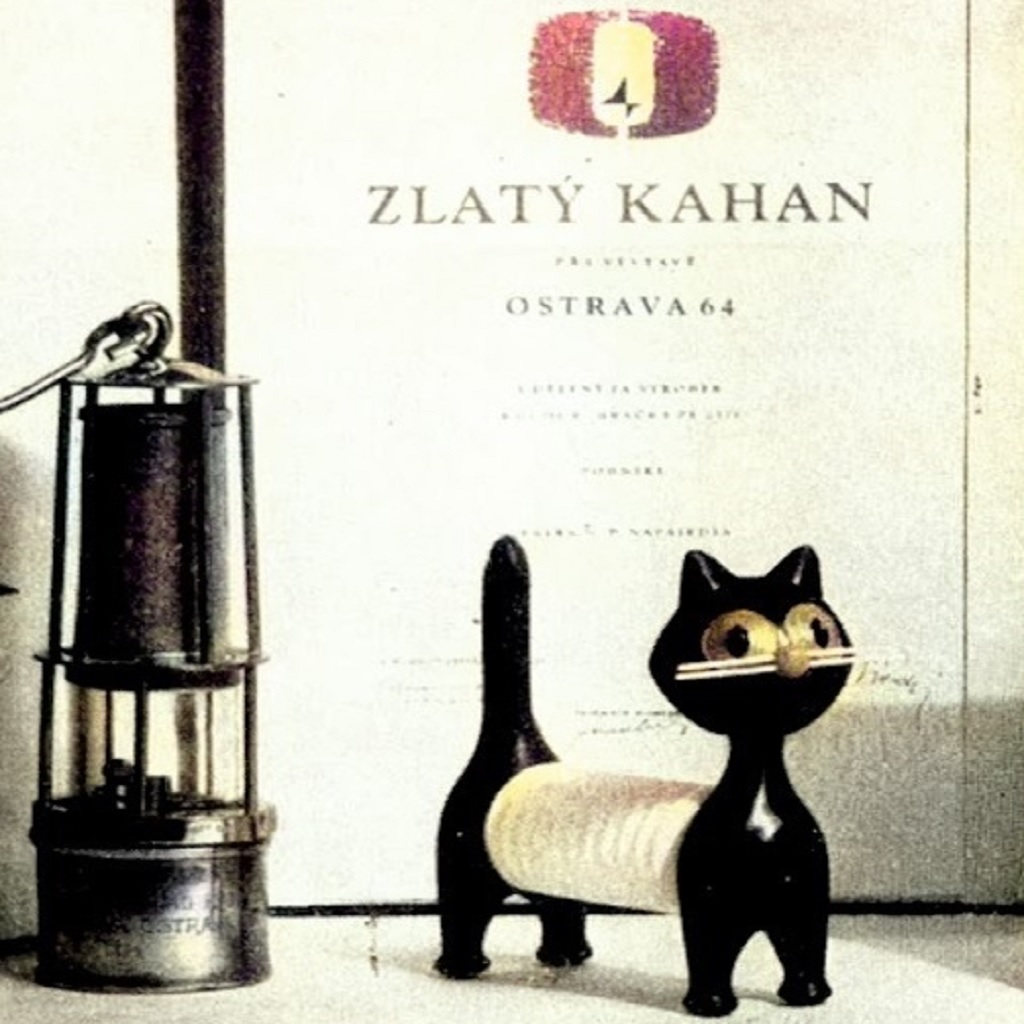
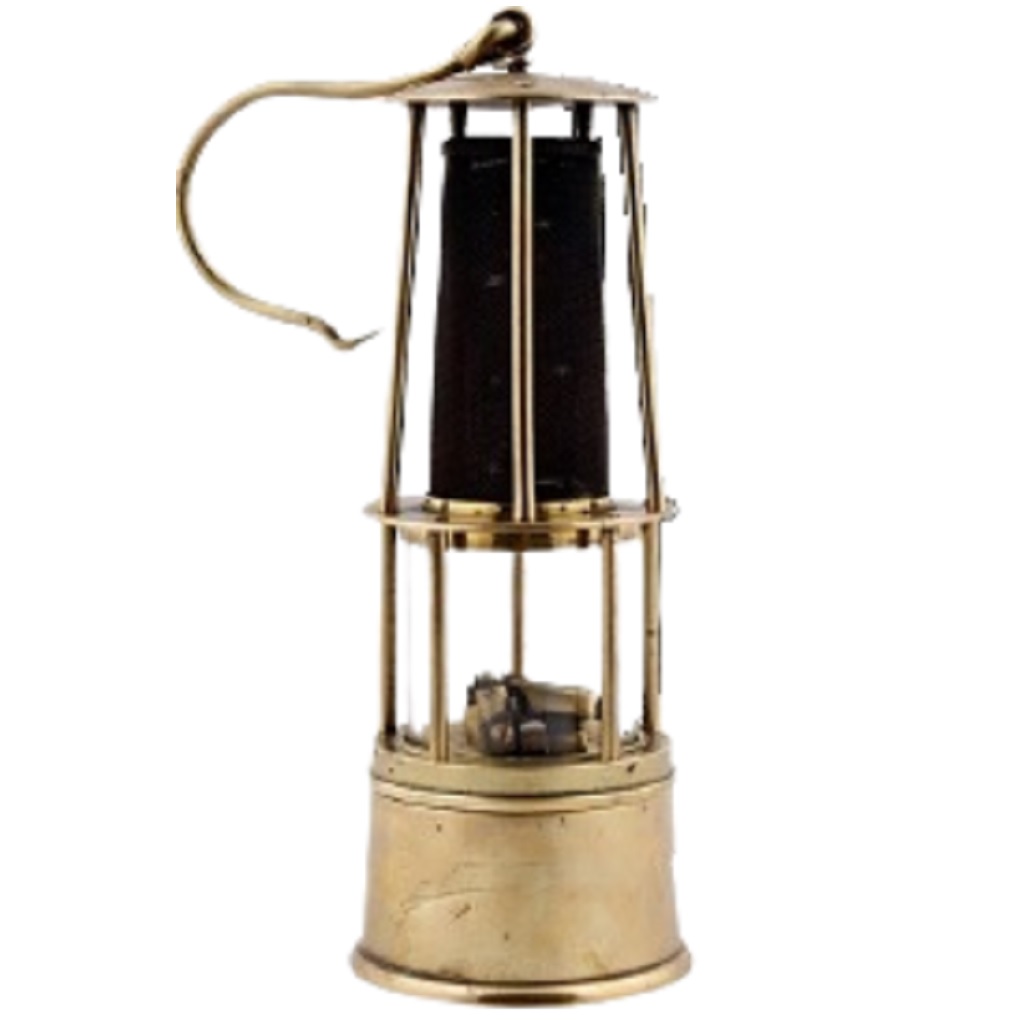
The star of exhibitions...
Immediately after the production of the first prototypes, Tomcat was entered in several exhibitions and fairs here and abroad, and everywhere he received admiration and various awards. They were, for example, the following honors:
- 1964 Golden burner, Ostrava exhibition markets
- 1964 - Perfect product, Ostrava exhibition markets
- 1965 - Perfect product, Ministry of Industry
- 1965 Gold medal, Liberec exhibition markets
- 1966 Honorable Mention of the BIO Biennale, Ljubljana
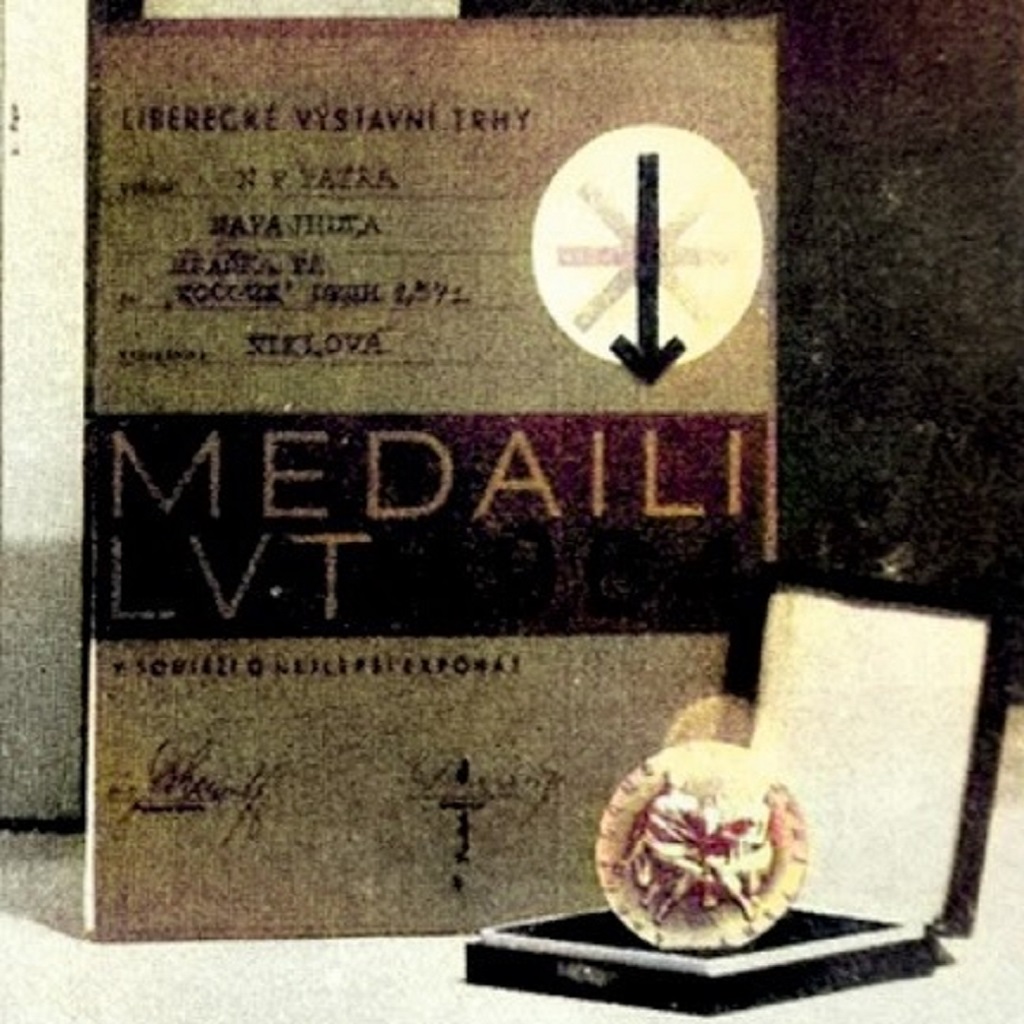
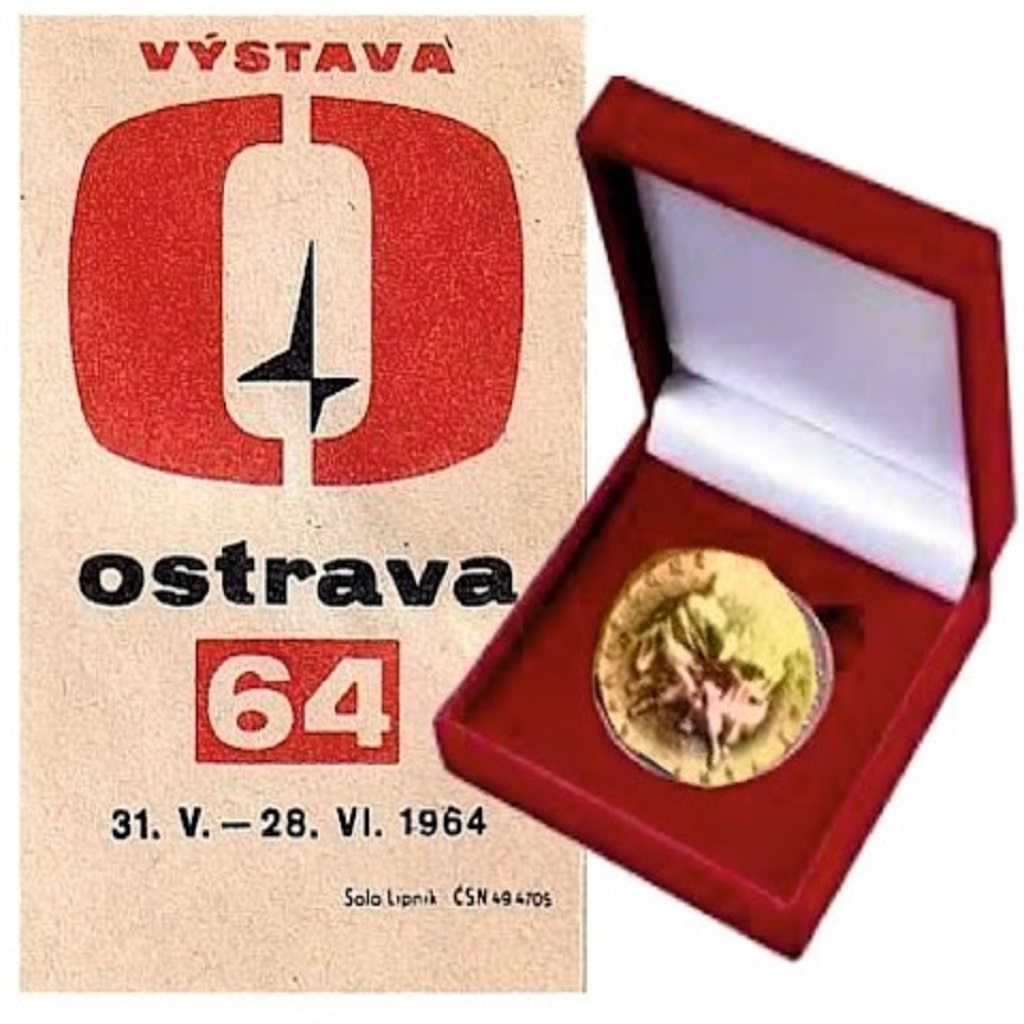
Patent...
Libuše Niklová applied for a patent for a flexible plastic toy on May 27th, 1963. The application received the number 1963-3043 and was evaluated for 780 days. The patent was published on January 15th, 1965. And when the patent for the world’s first flexible toy was finally issued on July 15th, 1965 under the number 115236, the history of the toy industry was changed forever. Even today, toy manufacturers widely use the principle of such accordions, due to their flexibility and compressibility, and thus also the use of a whistle or other sound system. It was an absolutely brilliant and revolutionary idea. The original purpose of this patent, as Libuše Niklová intended it, which is to use the accordion as the torso of mostly animals or babies, on the ends of which, for example, heads or limbs can be placed, was copied in at least 25 countries around the world.

Production...
A bellows tube from a flushing tank was used on the flexible body of the Tomcat. The other parts – the legs and the head – were produced using the technology of extrusion or blowing into molds. The eyes were painted by hand and then annealed with hot air. Plastic tubing was used for its whiskers.
Serial production of the Tomcat began in 1966, and over 270,000 were produced in the very first year. The following years continued at the same pace, until 1970, when the Tomcat production line in Fatra was stopped. In the end, more than 1,200,000 of them were produced here. This is really an unbelievable number, but it really is so and it only proves how popular this accordion tomcat was with children since his birth.
Place of birth
Fatra Napajedla, Gottwaldov district
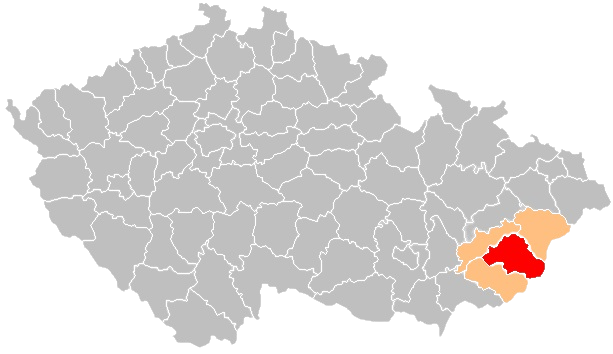

Length
19 cm
Height
19 cm
Material
PE
Packaging...
Libuše Niklová also designed the packaging in which the unassembled Tomcat was sold. And both a very stylish and eye-catching label, as well as the internal cross-sections into which the individual parts were inserted.
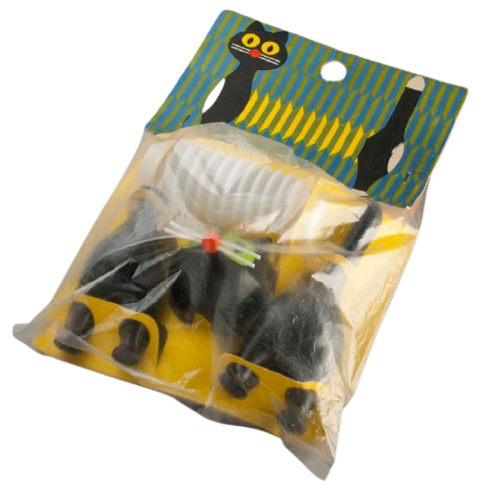
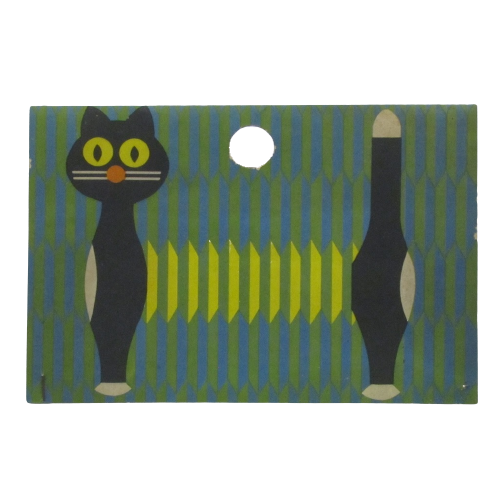
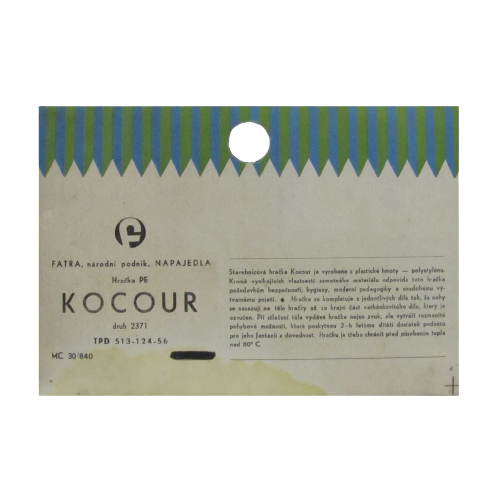
Not every Tomcat is the same...
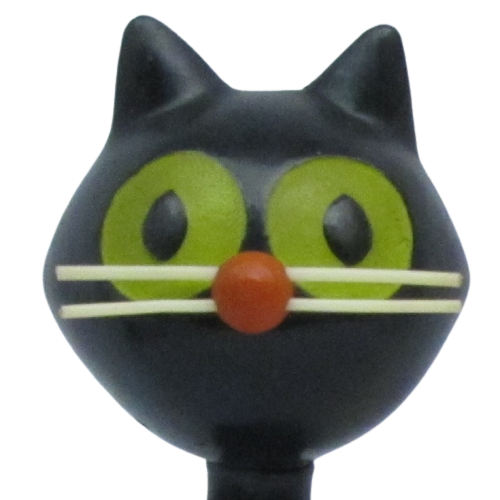
Eyes
The first tomcats had yellow eyes in 1966 and 1967. In 1968, 1969 and 1970, the Tomcat had green eyes. Here, too, the genius and perfectionism of Libuše Niklová, as well as the quality of Czech production, can be recognized. Although Tomcat has dozens of hybrids around the world, no other tomcat has such well-made eyes that can withstand rough handling or cleaning. Abroad, they therefore tried to replace them with stickers or to make them entirely out of plastic.
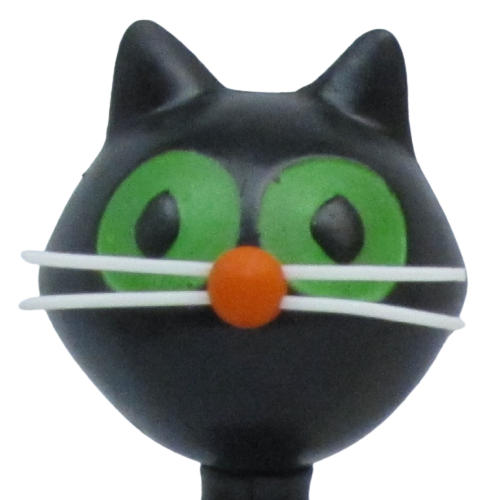
Marking or Tomcat®
The original tomcat created by Libuše Niklová is always marked with a small f in the circle, which is the brand of the manufacturer, i.e. Fatra Napajedla.
But even Tomcat® can have two different markings. The marking is located on the back of the head. So there is always a small f in the circle, but this small f can be supplemented, but not necessarily with a patent number. On the left side at the bottom is written ČS. PATENT and on the right is No. 115236.
Tomcats with a patent number are the older ones. They are definitely tomcats from 1966, 1967 and 1968. We have no record of the exact date of the switch to markings without a patent number.
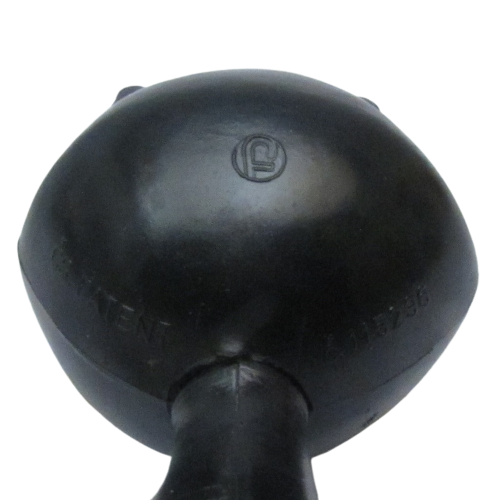
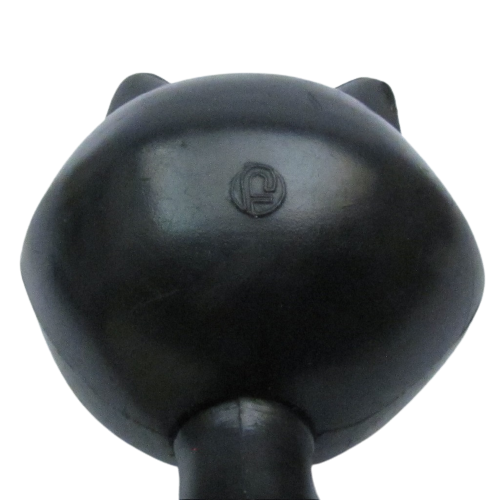
Accordion body
The Tomcat was made with a white accordion, as everyone knows it. However, in order to expand the product range, Fatra also produced an indeterminate amount of black and yellow accordion tomcats, the yellow one is on the toy’s original packaging, in addition to the huge number of tomcats produced. That was sometime after 1968. There was even a prototype with a transparent harmonica, but it was one of the very first in 1964 and unfortunately, it has not survived.
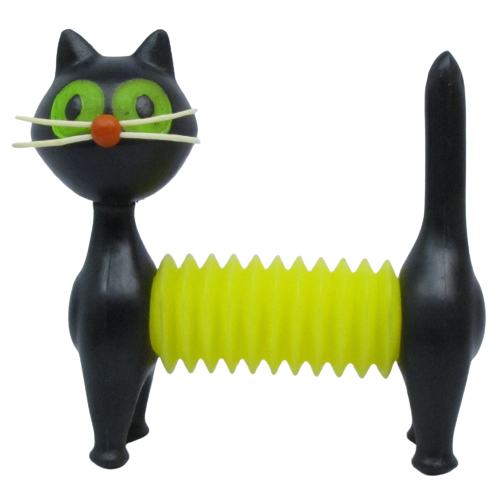

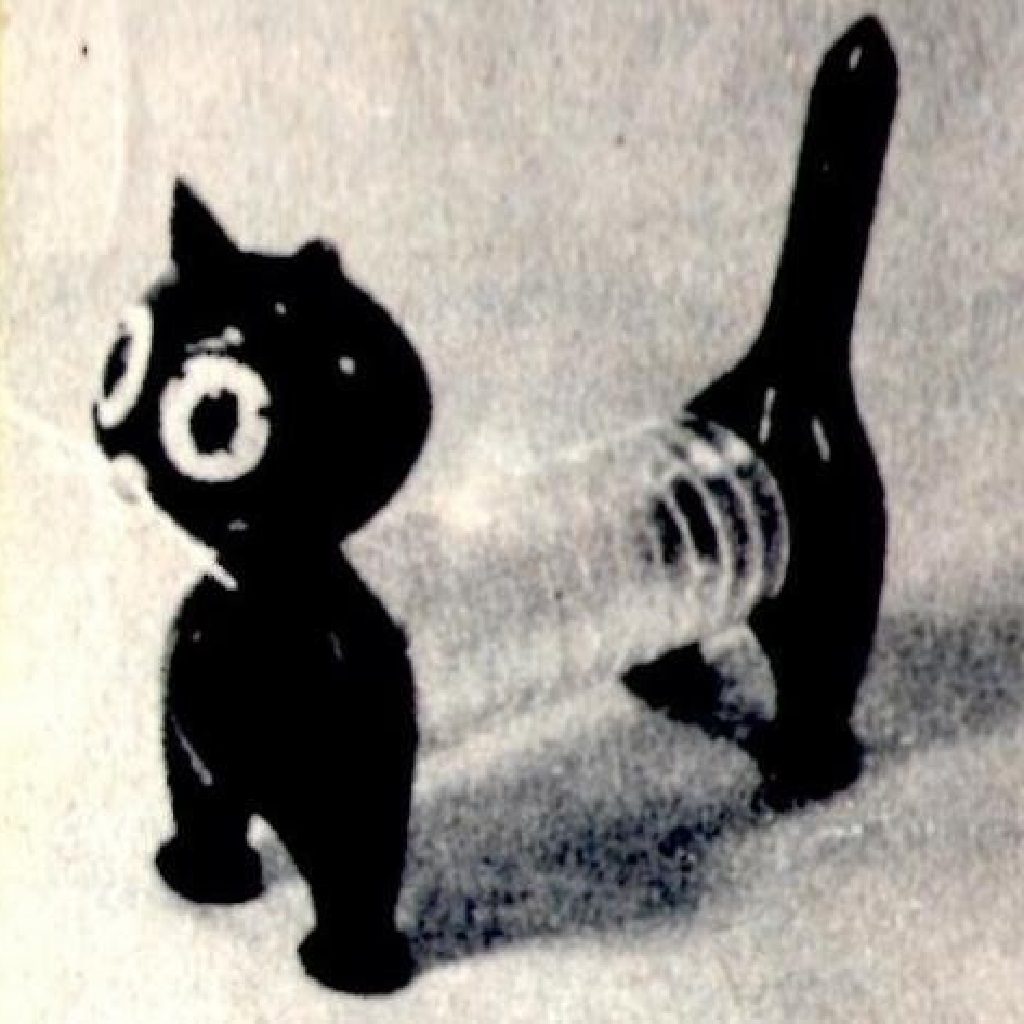
What can the Tomcat do?
The Tomcat was sold disassembled, so it was a kit, so the children had to put it together, which supported the development of their thinking. It was sold as a four-piece kit, although it actually consists of eight pieces. When pressed, the toy makes a sound thanks to the whistle, which was inserted into the accordion. As Libuše Niklová herself said, thanks to the flexibility and squeak, the child can imitate creeping, stretching, meowing as he observes in nature, as if he were playing a theater with puppets, unlike other toys that move either with friction or wind-up mechanism, where the child is just a passive observer. It was absolutely brilliant and revolutionary, no such toy existed anywhere in the world and therefore its production was adopted all over the world. In addition, the cat was made of very durable and easy to clean Polyethylene (PE). It was designed primarily for children aged 3-6 years.
- He consists of 4 parts
- He bends
- He whistles
- He turns his head
- He turns his nose
The traveling Tomcat...
The tomcat was a toy so revolutionary and so attractive to children as well as adults that even foreign companies saw the potential for success in it. Within a few years, its production was adopted by companies all over the world. This happened without the knowledge of Libuše Niklová, although her invention was patented, unfortunately, nobody dealt with copyright at that time and so this fact remained secret for a long time. Even though they were probably a little worried about copyright so they slightly modified the original Tomcat in each country so that it would never be the same. This resulted in dozens of mutations that have only slight differences, such as the color of the body, head, or accordion, or various modifications on the head, such as the color of the eyes or the material used to make the eyes.
Although Tomcat was an absolute phenomenon of his time, he was copied by states both on the eastern side and on the western side of the iron curtain, which is hugely unique, Libuše Niklová had no idea about it. And she was not alone, almost no one knew about this fact, only Fatra once found out that Tomcat had been copied in Hong Kong and Hungary, but this information remained more or less in their archive and became public only in a few annual books of the company, where they hardly reached anyone, even the person who was in charge of the Fatra archive for many years did not know about them. And among a few toy collectors, several Polish hybrids were known.
And so Libuše Niklová was never awarded for this unique achievement, not only for the very likely first flexible plastic toy in the world, but also for influencing the production of plastic toys around the world, and thus she did not receive any recognition for the fact that her Tomcat has influenced the childhood of tens of millions of children around the world.
But fortunately, one researcher appeared who decided to right this wrong. Researcher Lukáš Toman has tracked down over 160 foreign mutations of accordion toys, since 2012, when he came across the first foreign Tomcat, the Hungarian one, and thus decided to popularize Libuše Niklová and her work. As the first exhibition and demonstration of this discovery, he initiated an exhibition for the international conference ICOM Prague 2022 at the Museum of Decorative Arts, where together with Petr Nikl they organized an exhibition entitled How a Tomcat Travelled the World: Libuše Niklová’s Toys and Their Foreign Hybrids. So far, he has managed to track down 25 countries in which Libuše Niklová’s accordion toys were produced, in today’s world order it is 45 countries. In some countries, even 4 different manufacturers produced this Tomcat. Out of more than 160 mutations of accordion toys, there is almost 90 mutations of Tomcat from 23 countries of the world, making it clearly the most copied of the entire series of accordion toys by Libuše Niklová. Of course, the search is still ongoing, so these are definitely not the final numbers.
Sample of foreign hybrids
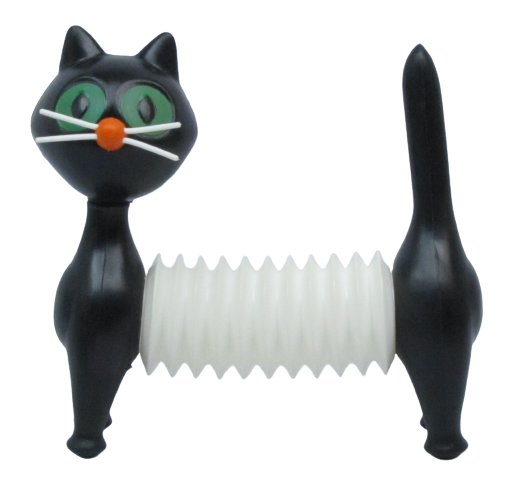
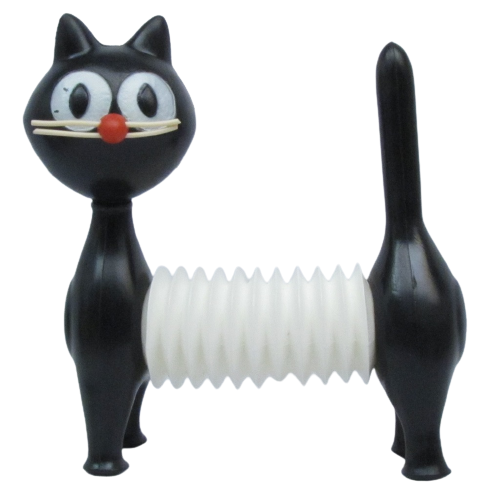
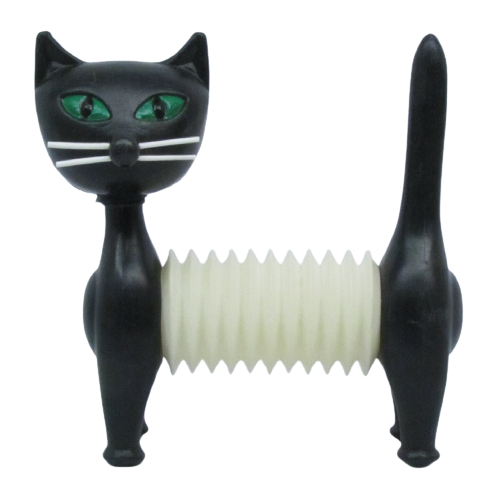
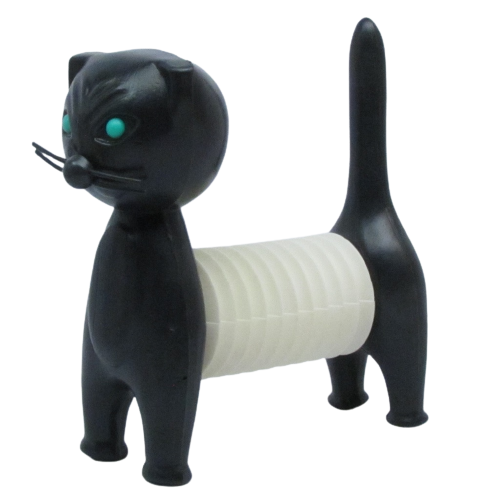
Austria around 1969
Spain around 1969
Poland around 1970
Poland around 1971
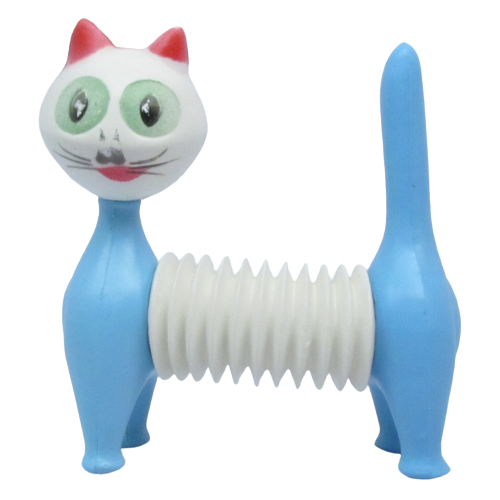
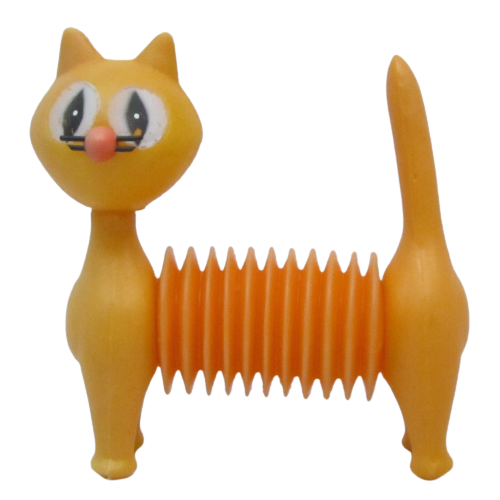
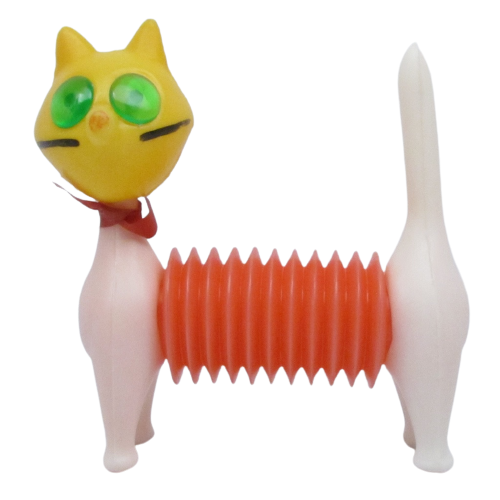
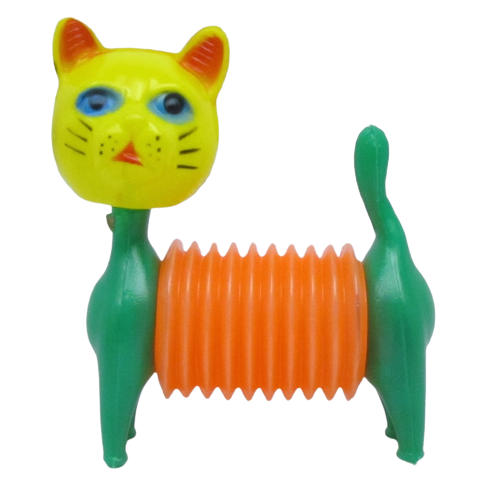
Hong-Kong around 1970
Taiwan around 1970
Israel around 1970
Vietnam around 2000
The Tomcat and his original friends...
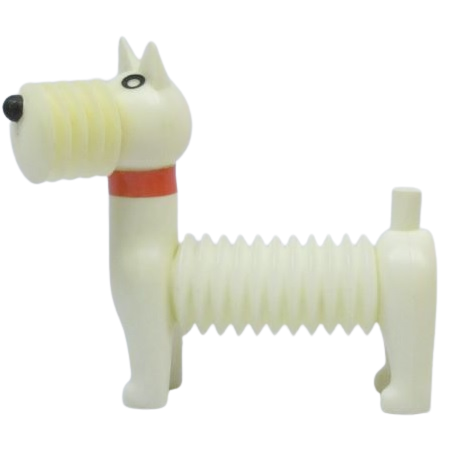
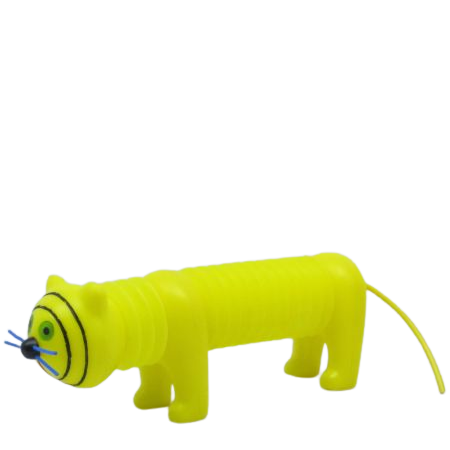
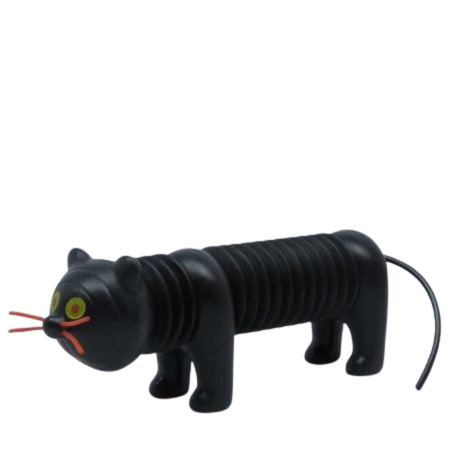
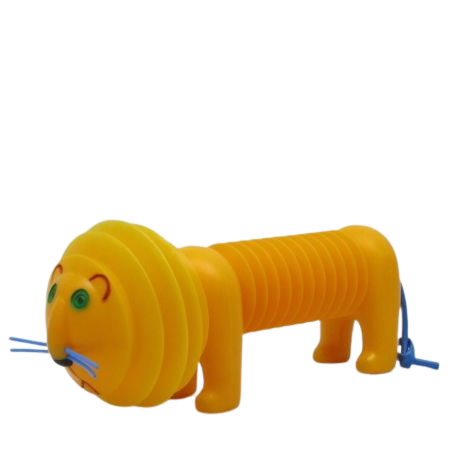
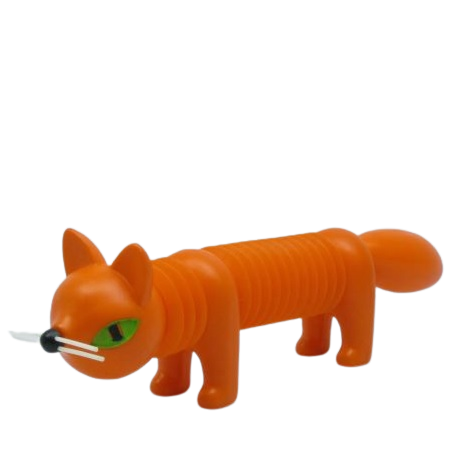
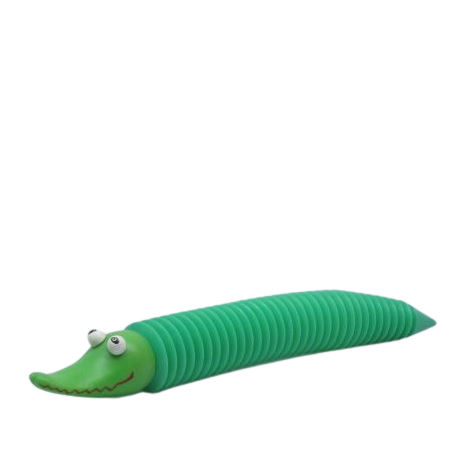
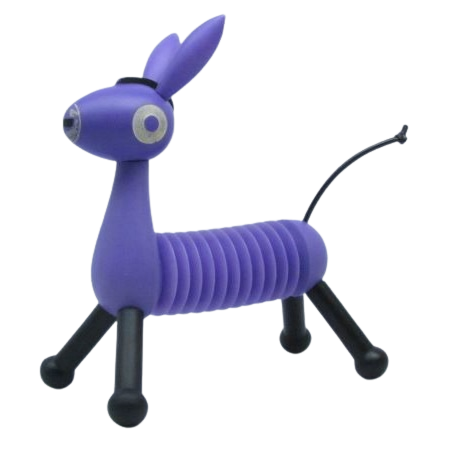
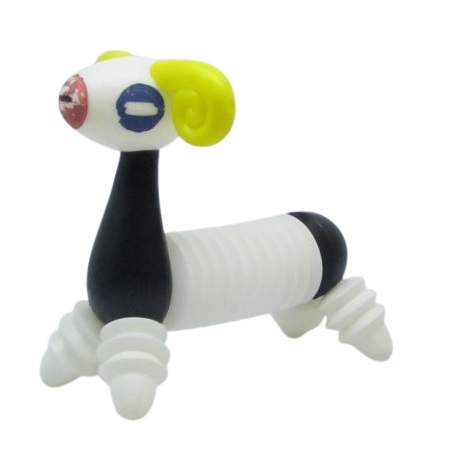
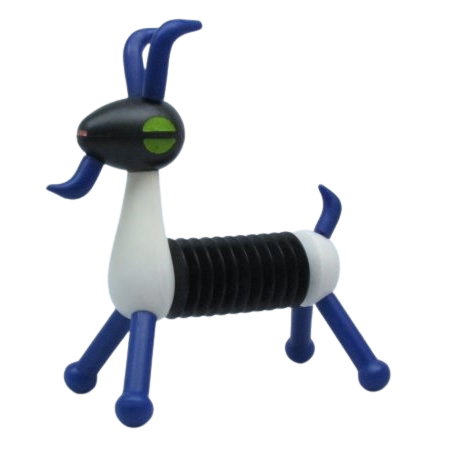
The tomcat was the first animal that Libuše Niklová designed, but the patent application already mentions a dog and that this alternative does not close the range of possible artistic variations. It was therefore clear as that the sun would rise tomorrow that a person with the genius and creativity of Libuše Niklová would make some friends for her Tomcat. And so, in the end, 9 other animals with an accordion body were created. They are Rafan the Dog, the Tiger, the Panther, the Lion, the Fox, the Crocodile, the Ram, the Donkey and the Goat. Even these handsome guys were very popular abroad and they too were widely copied, especially in Poland. This original collection is extremely valued and sought after by both museums and private collectors around the world.
The Tomcat, an icon of world design...
The tomcat was a really wonderful toy in its time, it still is in some households, but today it mainly shines in museums and galleries as a design gem, modern art of the highest quality. Libuše Niklová’s original Tomcat has already appeared at traveling exhibitions on three continents and was everywhere one of the main exhibits and one of the most admired by the audience.
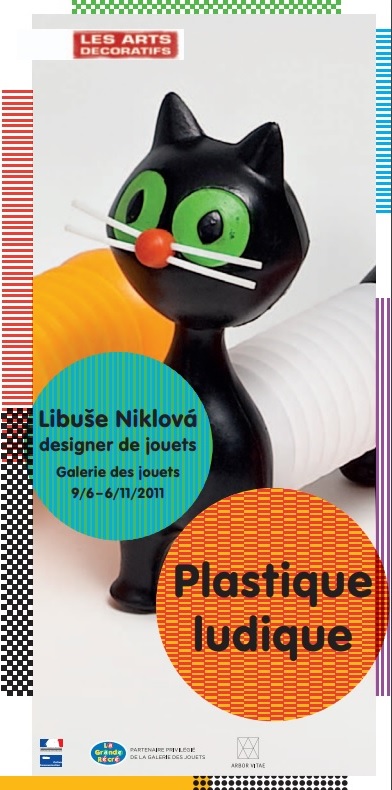
We know for sure that the original Tomcat participated in exhibitions in these world museums:
- MoMA, Museum od Modern Art, New York, USA
- Musée des Arts Décoratifs, Louvre, Paris, France
- Museum of decorative Arts, Prague, Czech Republic
- MoMAK, The National Museum of Modern Art, Kyoto, Japan
- Setagaya Art Museum, Tokyo, Japan
- Toyama Prefectural Museum of Art and Design, Toyama, Japan
- OkazakiCity Art Museum, Okazaki, Japan
- The Museum of Modern Art, Hayama, Japan
In 2020, the Tomcat received a huge honor, because he became the mascot of the 26th general conference of ICOM Prague 2022. This is the largest museum event in the world. ICOM (International Council of Museums) is an international professional non-governmental organization with UNESCO consultant status. ICOM unites more than 2000 museums from 138 countries of the world. This event is comparable in importance to the Olympic Games for the field.
Several objects related to Czech culture and history were chosen as symbols of the conference. Among them, for example, the Venus of Dolní Věstonice, but Libuše Niklová’s accordion tomcat became the main face of the conference, and rightly so, because it is one of the most copied Czech inventions, known almost all over the world.
In addition, a postage stamp was created for this occasion, on which the Venus of Dolní Věstonice and Libuše Niklova’s tomcat are depicted in a modern concept by the graphic artist Miroslav Roubíček, who is the author of the graphic visual for this conference.
ICOM Prague 2022
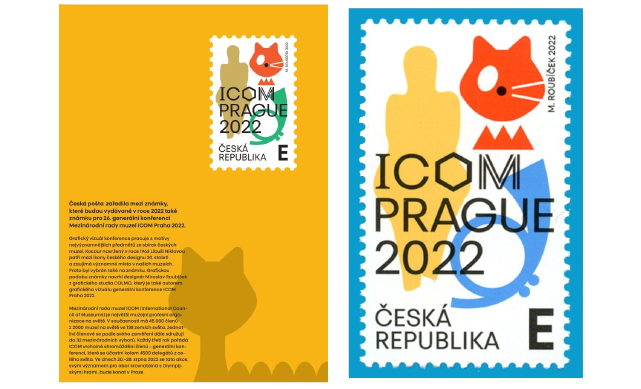
Líba the tomcat
And that’s not all, the Tomcat received another award, because ICOM even decided to name him among with making him the mascot of the conference.
The Tomcat was known only as Tomcat all the time, although his dog friend, for example, was given the name Rafan by Libuše Niklová, but he was the only exception among these accordion animals. That’s why he was always referred to as the Accordion tomcat, and that’s why ICOM decided to name him. From a few name suggestions, the name Líba was chosen with the consent of Petr Nikl, which was suggested by the researcher Lukáš Toman. In addition, this step separates the original Tomcat Libuše Niklová from his foreign hybrids.
„When I learned about this naming of Tomcat, the name Líba immediately went through my head, it was immediate. I then set the important conditions that the name had to meet. The main thing was that the name should be unisex, because even though it is a tomcat, the male, most people call it a cat. It was also important that it fit in with the names that Libuše Niklová gave to most of her toys, i.e. that they were from the sixties. To somehow honor Libuše Niklová and, if possible, to be the name, which is used for pets as well. The name Líba fulfills all this perfectly. It is a diminutive of the name Libuše, Liběna or perhaps Libor or Liboslav, so it is unisex. It fits into the sixties, and the closest ones called Libuše Niklová, Líba. And it’s also a name that was mainly used in the past as a name for cats and tomcats, but even today you can find cats named Líba in households.“ Lukáš Toman’s explanation of why the name Líba was chosen.
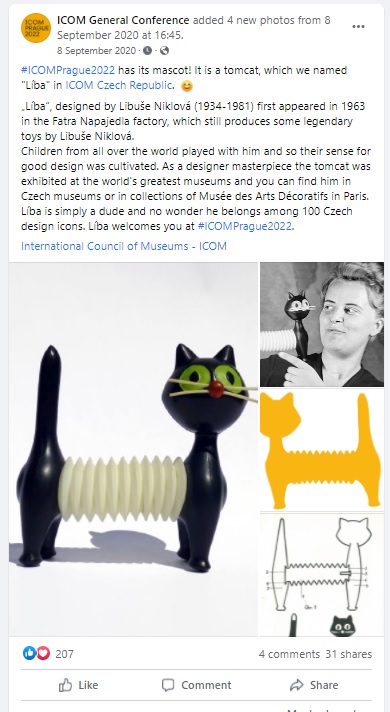
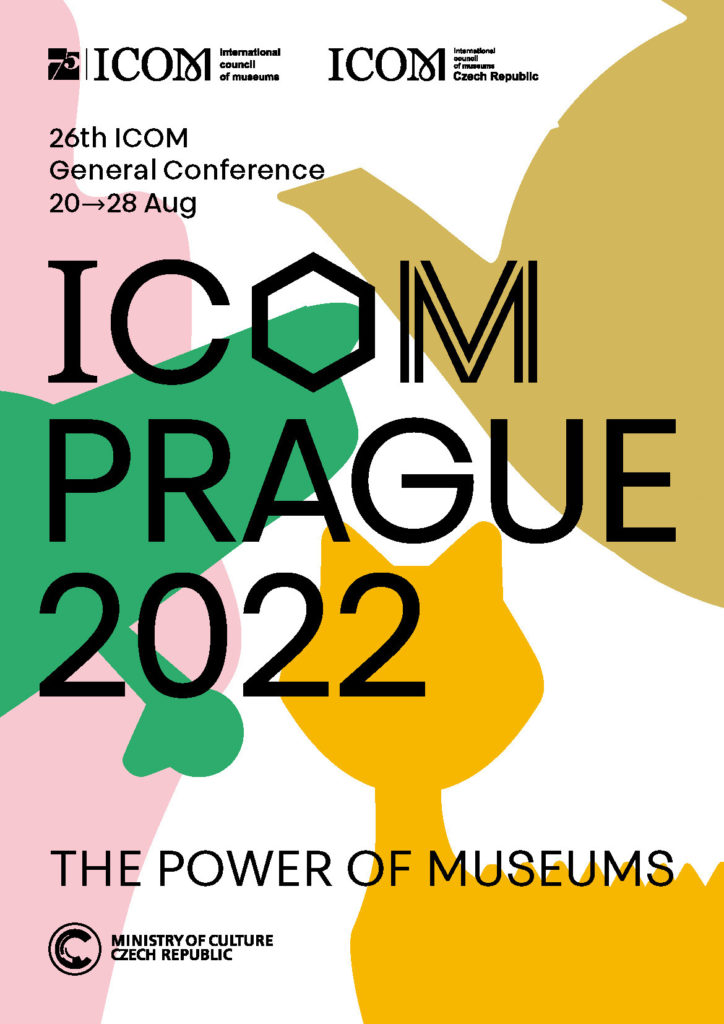
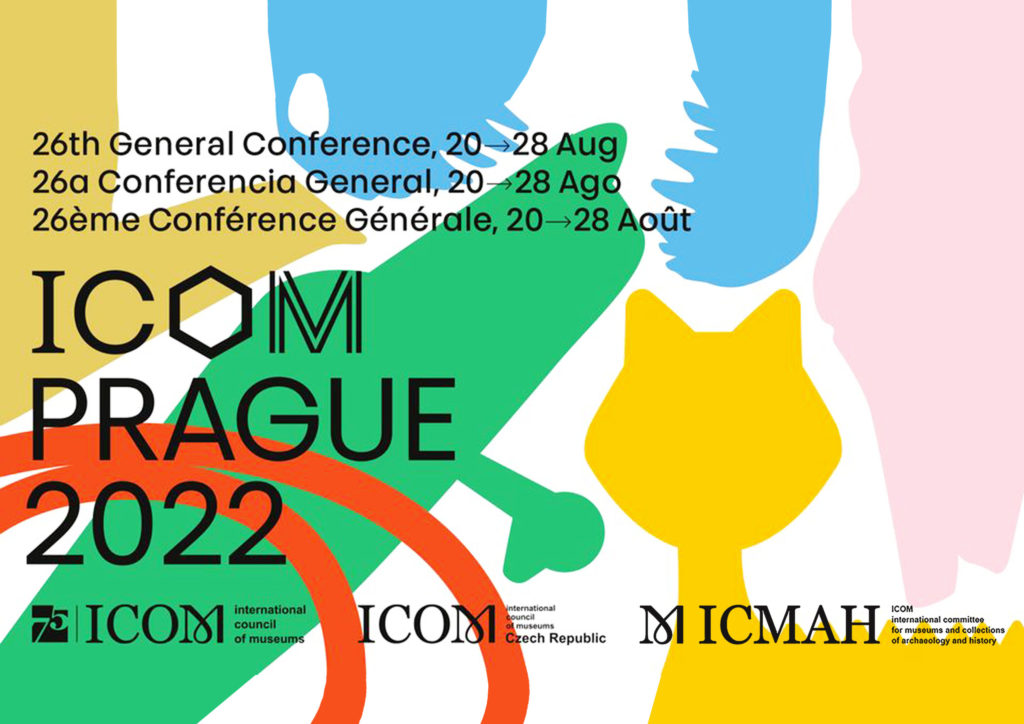
Líba the tomcat everywhere in the center of attention...
The tomcat was not only seen in world museums, but you can see it at some domestic toy exhibitions, in toy museums, but also in city museums or museums of modern art or design throughout our country. And everywhere it is the center of attention and arouses the greatest interest of visitors. His foreign hybrids are also widely displayed in museums around the world.
It has also become the centerpiece of many living rooms as a beautiful design accessory with a touch of retro. Somewhere the tomcat has even been exhibited since its purchase in the sixties, even then it was perceived as a design element. He was recognized as a design gem when he was included in the Czech 100 Design Icons in 2005 and in 2012 when MoMA included him in the exhibition Century of the Child: Growing by Design, 1900-2000.
The Tomcat also appeared in many media, whether on radio, television, newspapers, magazines or on prestigious websites. And not only in our country but also abroad.
He was also honored, for example, in Hungary, where he became the main star of the popular children’s theater play Miau in the Kabóca puppet theater.

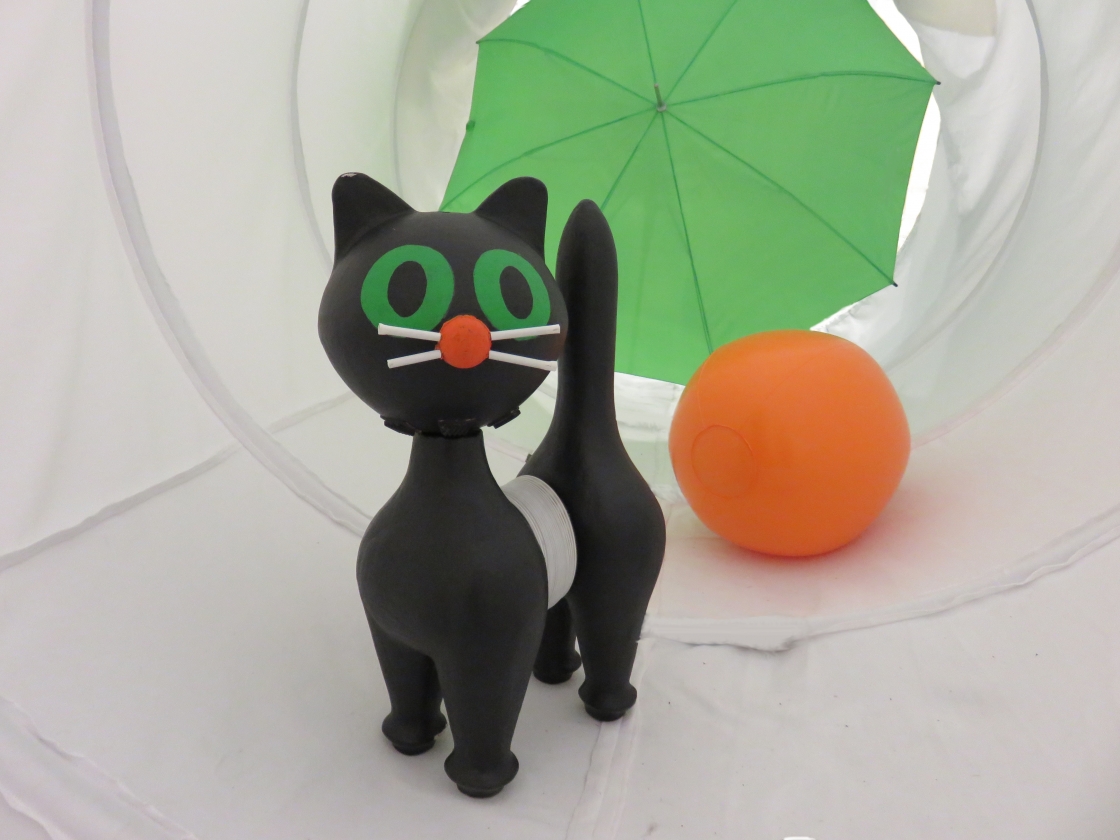
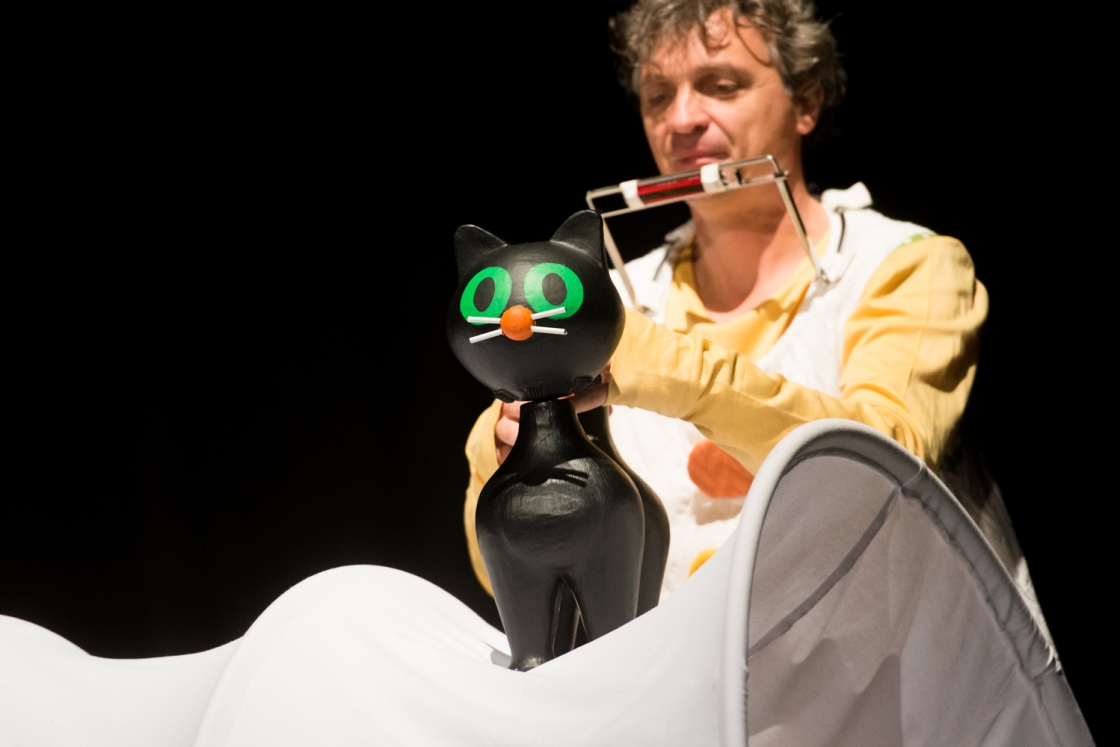
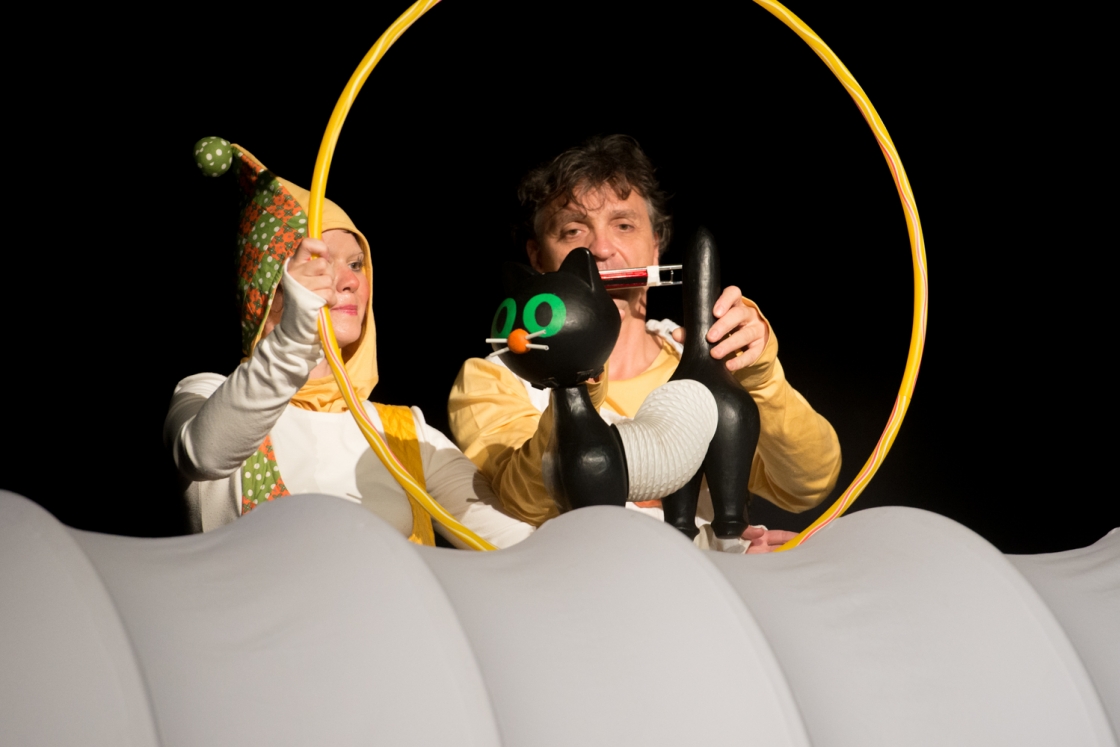
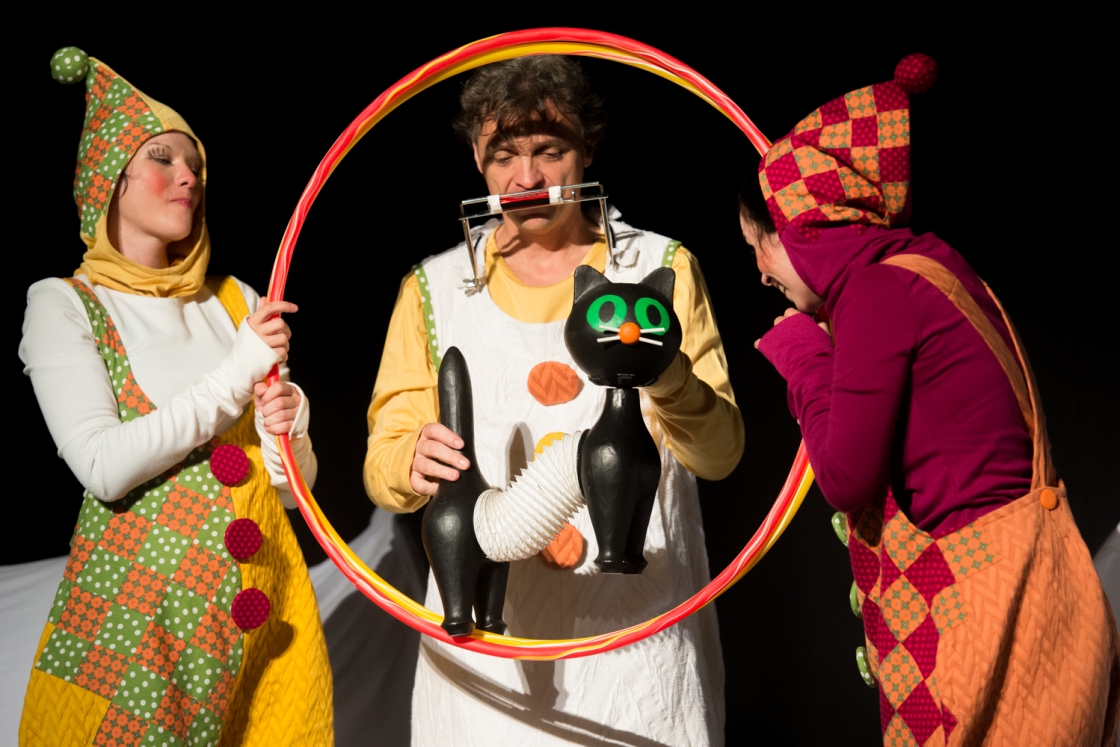
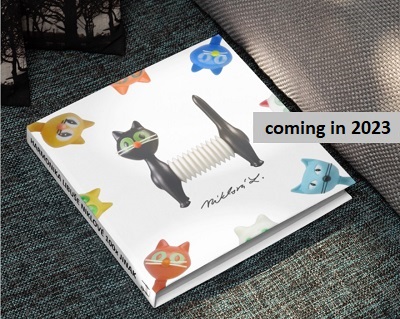
The future of Líba the tomcat...
Although Tomcat is almost 60 years old, he has a bright future ahead of him. Countless different exhibitions await him, where he will be the main star, here and abroad. There will also be books about him, for young and old. But many more adventures await him, maybe we will even manage to initiate his re-production. So don’t miss it and follow the news on this website and on our social networks.
Líba the tomcat at your home...
We will be very happy if you send us your photos of Líba the tomcat in your homes, whether retro, period or modern. On the shelves or how you play with them. We also welcome your stories from childhood or adulthood that you experienced with this incredible toy.
Do you have Líba the tomcat at home who is not in the best condition? We can restore it for you.
Or do you have this tomcat at home that looks like Líba, but is not exactly like our czech Líba? Please let us know.
